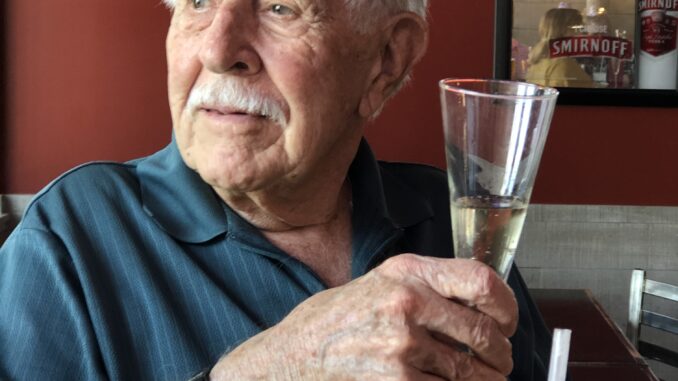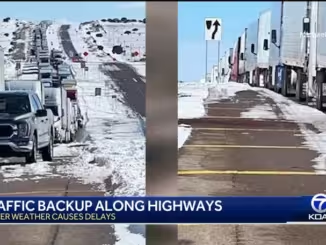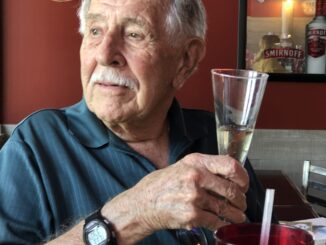
A Patagonia/Chile Adventure
A current eye-catching TV series is the splendid offering about Patagonia. This land is a huge and captivating expanse of real estate in the southern reaches of South America, which includes every imaginable kind of terrain: mountains, deserts, plains, and a very long stretch of South Atlantic seacoast. It’s totally breathtaking in its variety, climate range and potential for becoming the location where, if the management of global resources can be maximized, may become the last bastion of hope for ecological recovery of the planet. It is a country-sized part of Argentina which, ironically, is widely renowned for its lack of ability to govern itself, much less become a beacon of light in the global twilight.
Ten years ago, my wife and I were privileged to take a long cruise, which originated in Buenos Aires and steamed south along the Patagonian coast on the first long leg of the trip. We made many interesting stops along the way, including a side trip to the Falkland Islands, the disputed territory that provoked a war between Great Britain and Argentina. The Brits won that one, and the islands, a.k.a. Las Malvinas to the Argentinians, remain under British control. Our ship was welcomed there by an overflight of four F-16 fighters of the Royal Air Force. I still have a picture of us standing before a street sign that said “Thatcher Drive,” to commemorate Aunt Margaret, the British prime minister at the time, who was also known as “Attila the Hen.” Lovingly, I’m sure. I felt smug for a good five minutes, until “she who must be obeyed” brought me down to earth and back to the ship.
The first episode of the TV documentary features all the coastal sites, plus a really good overview of the sea’s plentiful and varied
forms of life. The episode ended at that point, without yet addressing the second most important industry of Patagonia, which is the raising of sheep in those areas where it is feasible. One of our cruise stops was at a working sheep ranch, where we were treated to a demonstration shearing of a very wooly ewe. Future episodes of the show will also examine the vast, wild and most inaccessible regions of this incredible land, which has rightly been called “The Last Frontier.” For us, the adventure was just beginning.
Our own odyssey continued down the coast to Tierra del Fuego, the “Land of fire,” with a stopover at Ushauaia, the southernmost human settlement before Antarctica. We learned that Tierra del Fuego was so named by early Spanish explorers cruising the coastline. The local natives would light fires at intervals along the coastal mountains, so they could keep track of those suspicious- looking foreigners. Then we continued through the “Horn,” at which point two oceans clashed, creating extremes of weather that have sent hundreds of ships to a briny burial.
Then we made an unexpected stop, but not a landing, while cruising through the Straits of Magellan, at a point where we entered the roiling Pacific Ocean. We were then at the “end of the civilized world,” as the early sailors had observed. The seas, even in the middle of their summer, in late November, were frigid and dotted with smaller icebergs. We were suddenly informed by our captain that an Antarctic explorer ship sailing fairly close to us, had lost its engines and was adrift in the straits. It was headed toward the rocky coast at about fifteen knots of wind and current abetted drift speed. Unless they could fix those engines, the fate of the ship was certain to be disastrous. By maritime law, a ship in distress must be rendered such aid as any ship in the area could provide. So our ship hove to, and
began preparations to board survivors of the explorer ship, should she arrive at a point where a shipwreck was inevitable.
For a twenty-hour period we kept pace with the explorer ship, while a Chilean Coast Guard helicopter ferried a repair crew to the distressed vessel. With about an hour to spare before having to abandon ship, the repairs were effected and the explorer ship was again under way, now with her own power. And so were we, except that we continued north, while the explorer ship went on her way south to Antarctica. All that adventure and no extra charge for it! In fact, we got to add another day to our itinerary, with lots of wonderful food and beverage service, courtesy of Norwegian Cruise Lines. We all thought that this gratis adventure, with all its opportunity for learning, was worth the price of the whole cruise.
The coast toward Chile proved just as interesting and varied as was Patagonia, with maybe a few more smaller cities along the way. Every mile of the homeward leg of journey was filled with eye- popping scenery, including fjords penguins, fish farms, and other opportunities for learning. We learned that the Chilean fishing industry, especially for salmon and sea bass, is burgeoning. We finally landed and debarked at Valparaiso, Chile. where our learning continued. It happens that this region of Chile has long been colonized by German immigrants, some of whom had arrived well over a hundred years ago. They are all trilingual, or better, and they extended the hand of friendship to us. They know enough about our history to be aware that Germans made up the majority of settlers in the United States during the 19th Century.
The cruise was over at that point, but we still had time to see more of Chile. We boarded luxury buses for a fifty-mile ride to
Santiago, the capital city and our departure point for home. A couple of days in that city leave one thirsty for a lot more. It is a delightful, colonial Spanish city, with any number of points of interest to visit. Naturally, we chose to spend a day at the largest winery in the country, where they fed us all the beef we could manage and all the wine we dared to imbibe. The altitude of Santiago is around the same as Denver, so we learned the wisdom of sipping, rather than swigging.
This was the finest cruise, bar none, that we have ever taken. Both Argentina and Chile are U.S.-friendly countries, but in South America, revolutions are known to be brewing at times when the appearance would lead us to believe otherwise. But a long-game observation of the continent convinces me that we should be making friends with them and looking for ways to complete the Trans- Americas highway to foster future economic, political and cultural relationships. If our State Department is watching South America in any depth, they will know that certain Asian countries have already made deep inroads in this direction.
Jorge Thatcher July 2022
George is an American Bad Ass. He grew up in Jersey, flew B-52s in Vietnam, taught English, Spanish and other languages to children around the world, makes his own salsa, has been known to enjoy a beer or two and has called Lubbock home for a few years, just to entertain the locals. Welcome to Raiderland, Major. We are going to feature some of his writings going forward. Some new, some old. Some rhyme, some don’t. When it comes to George, there’s no box. So… enjoy our friend and enjoy his writings! – Hyatt



